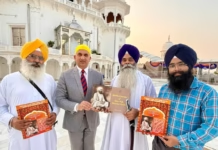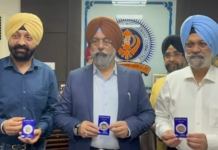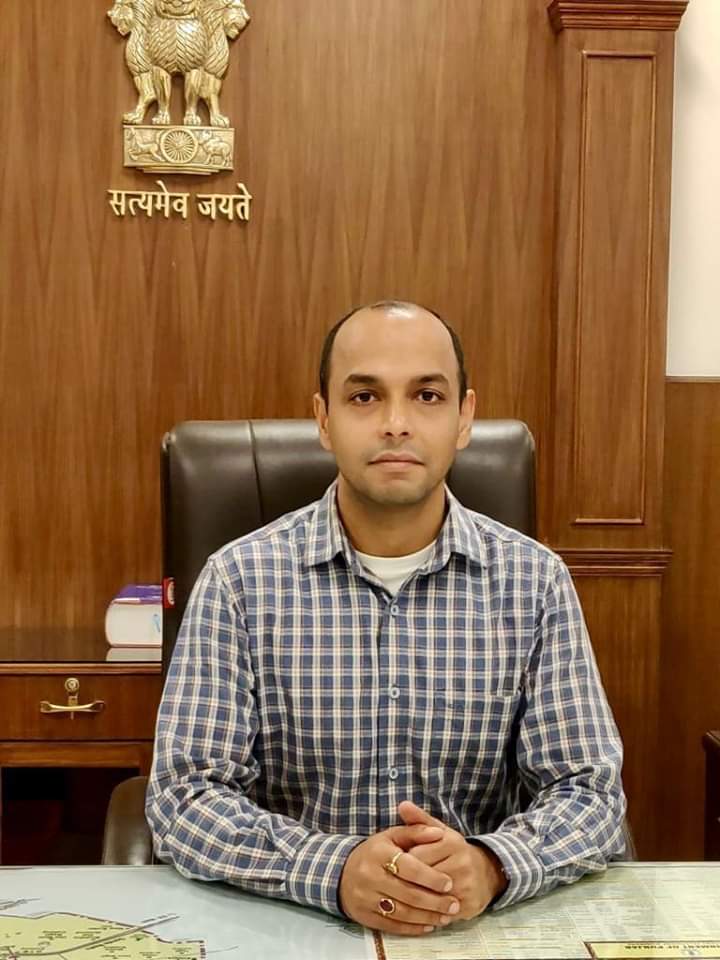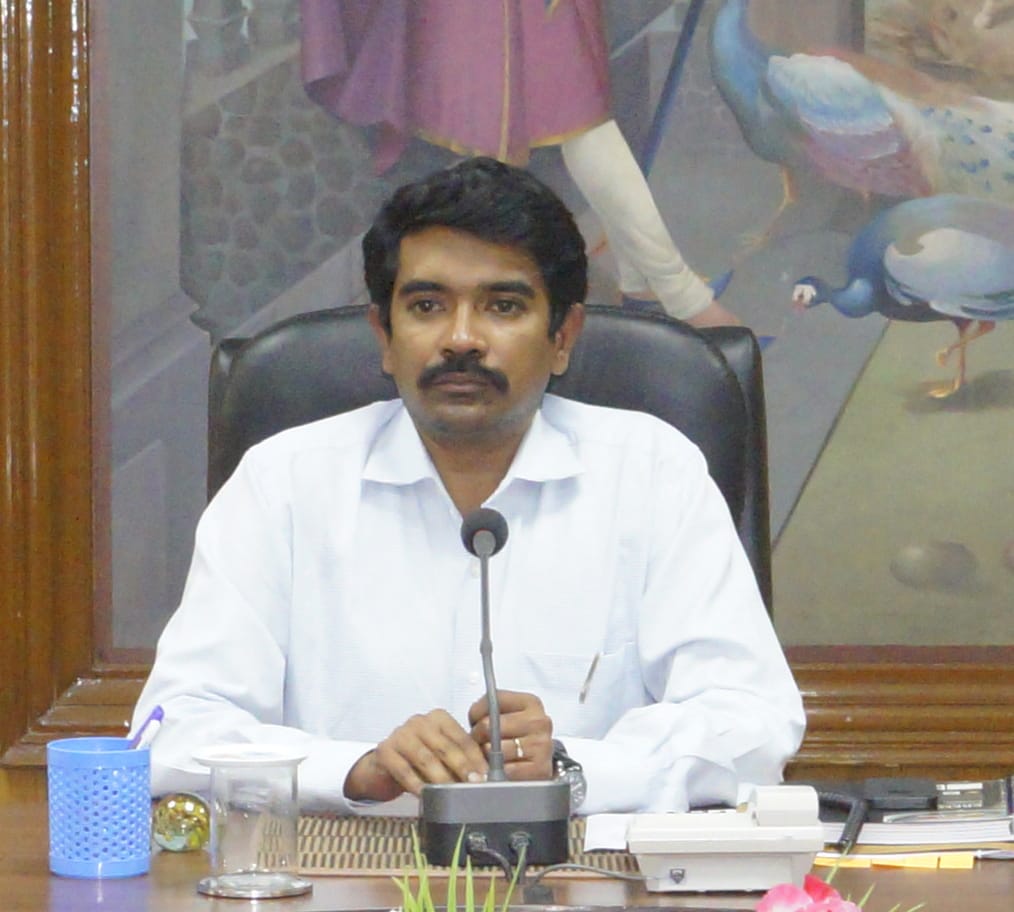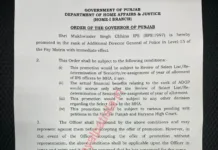For a breathable air, don’t buy rice- Pranav Chawla
Pranav Chawla*/royalpatiala.in/ New Delhi
The Air Quality Index (AQI) recently crossed the 700 mark in various parts of Punjab and Haryana and has induced cases of extreme headache, irritation in eyes, poor vision, difficulty in breathing and asthma, among people living in rural and urban areas alike. The extraordinarily large increase in pollution levels post the paddy harvest season shows that Stubble Burning is the major reason for this situation.
Graded Response Action Plan (GRAP) prescribes temporary banning of construction activities, reducing vehicle usage, closing offices and schools, etc during such health emergencies. While these steps reduce the impact of air pollution, they don’t tackle the root cause of the stubble burning, and are thus, ineffective.
Under pressure to implement a permanent solution, the Centre and State Governments have tried some other steps. For instance, Punjab Govt has provided farmers with more than 50,000 agro-machines in these last two years at highly subsidized rates to empower them to remove agricultural residue from their land and not resort to farm-fires to prepare land for the next seeding. However, these scheme too have had very limited success because of various economic and agro-technical reasons. In fact, the no. of stubble burning cases have increased as compared to the last year, with Punjab recording the highest farmfires count of 5,953 on a single day ever, this Monday (as per PAU). Thus, it is only by drastically reducing the amount of paddy planted that a permanent solution can be reached.
A case against paddy plantation
Traditionally, rice has never been the staple diet of our people. It was grown only in very few districts of pre-independence Punjab like Gujranwala, Sialkot, Hafizabad and some parts of modern day Haryana, with the majority cereal produce being wheat and other ‘inferior’ millets. Rice was considered a luxury to be eaten only on certain religious festivals like Eid and Baisakhi, in the form of Biryani, Kheer and other sweet items.
Even now, rice is scientifically unsuitable for production in this region, as it is naturally meant to be grown under temperate climate conditions near the sea. Also, with maximum of physical work completely shifted to migrant laborers, rice consumption has become a major reason for growing obesity trends amongst the Punjabis, making it unworthy for consumption as well.
According to the US Department of Agriculture’s 2019 statistics, India produces about 112 million tons of rice in a year, out of which 102 million tons are consumed within the country. This means that the rest 10 million tons of rice has to be exported or goes to waste. Given that an estimated 4000 litres of fresh water is needed to produce just a single kilogram of rice (as per Indian Council of Agricultural Research), a simple math would tell us that 40 trillion litres of water is lost by India in producing rice that either is sent outside the country or simply goes unused. For a country facing a major water crisis with 21 major cities expected to run out of freshwater by 2020 and 6% of it’s total GDP expected to be lost to water crisis by 2050 (Niti Aayog’s 2018 Report on water crisis), such overproduction of rice is simply unacceptable.
When the governments of Punjab and Haryana realized the need to address the unnecessary burden created by rice cultivation on our water resources, instead of taking steps towards stopping overproduction of rice, they forced farmers to delay it’s plantation from April/May to mid-June/July. As a result, crops are now harvested in October/early November, instead of September. This has left farmers with virtually no time to clear their fields, which has to be done by mid-November for timely wheat seeding. In this situation, farmers prefer to burn the stubble, which is both quick and cheap, with minimal labor required as compared to using the subsidized agro-machines or older traditional methods.
The wind flowing over Punjab-Haryana Delhi belt is strong enough to clear the air of emissions during September, but as the season changes, the wind flows get stagnated by the end of October. With harvests and subsequent stubble burning now being majorly done after the winds have already stagnated, the emissions have nowhere to disperse to, and thus, get settled close to the ground, creating smog.

The excessive usage of water in cultivating paddy means that demand for electricity to pump it from underground is also high, and with availability of free electricity to farmers, there is virtually no incentive for them to avoid electricity wastage. This often leads to electricity shortage and load shedding, which forces the usage of diesel generators, simply adding to the dangerously high pollution levels.
Substitutes to Rice
With growing prices of legumes and fruits, it’s high time that the farmers of Punjab and Haryana shift from rice to these. Fruits even have a high export value, especially to cold places like the Scandinavian countries and desert areas of the Middle East. Some well off farmers like Navjot Singh Shergill from Patiala district, have successfully innovated and shifted to Strawberry plantations. Others have shifted to non-cereal crops like cotton, showing that monopoly of rice in our agricultural fields can be successfully broken. Furthermore, a break from rice cultivation will lead to replenishment of nutrients of the soil, whose quality has drastically degraded by planting the same crop year after year.
Another highly promising agro-entrepreneurial model is that of substituting rice with maize, to produce ethanol, which is used in manufacturing Biofuel. This Biofule can be used as an additive to petrol for increasing amount of fuel available for combustion in pre-existing power systems, or to completely do away with petrol engines and use pure bioethanol (biofuel) engines. Given that 85% of Petroleum products that India consumes are imported, we can lower our dependency on the same by using biofuels, and position ourselves in a better state to avoid being exploited by deliberate petroleum price raises by OPEC countries.
Furthermore, some scientists believe that this method of harvesting fuels directly from farmlands is either carbon neutral or even carbon negative in some cases, which makes it better for the environment. The only issue is the increased release of harmful nitrous oxides like N2O, which can be nullified by making it compulsory to install N2O filters as an inclusive part of the design of biofuel engines/power plants, at the very start of licensing of the same.

Many people debate that it is morally incorrect to use agricultural products as fuel when a large population doesn’t have food to feed itself. The truth is that India is food surplus, especially in terms of cereals production, and a lot of it is actually getting wasted. Also, the poorest sections of society sleep empty stomach not because of lack of food, but because of reasons like ground level corruption, defective distribution system and lack of awareness amongst the poor. The mass hunger issue will persist even if the cereal output is say, doubled, unless systemic changes are brought in to reduce corruption and spread awareness. Thus, rice production can be safely slashed to give way to production of multiple other non-cereal crops and for fuel, without making it any harder for the poor or any other section of the society.
Need of Public initiative against rice production
By now, it is conclusive that rice overproduction has direct & indirect, detrimental economic, medical and environmental repercussions; and that we have various appropriate crops available to shift to, once the rice cultivation gets substantially lowered in Punjab and Haryana. Therefore, it is critical to make the shift as early as possible.
But is it logical for us to expect farmers to stop mass rice cultivation by themselves? The Governments are bound to avoid steps that go against the wishes of the farmers and will not reduce the MSPs on rice crops, let aside the will to ban or even cap their production. Thus, it is bequeathed upon us, the public, to compel farmers against rice overproduction in Punjab & Haryana.
It is possible for a common man to believe that he is in no position to do anything about this issue. This proposition may stand true if the person is alone, but by utilizing the power of masses, a sea of change can occur immediately.

The market forces play a significant role in the agricultural economy of Punjab and Haryana. If we, the people, come together & decide that we will drastically reduce the amount of rice we buy, the price of rice in the market will automatically drop. This will force the farmers and the Governments to make arrangements to shift from mass rice cultivation to the production of other appropriate crops, and thus help in overcoming the root cause of this multi-dimensional problem.
Our privilege to choose the products we wish to buy must not come in the way of every individual’s right to a healthy & dignified life. Rather, we must use this privilege to abstain from purchasing rice as much as we can, forcing farmers against its mass production, and save ourselves from a slow and silent death at the hands of air pollution.
*The writer is Final Year Student,Mechanical Engineering Department,Indian Institute of Technology (IIT), Delhi and his contact is [email protected]
** The data, views are personnel views, data collected by the writer itself. royalpatiala.in is only publishing what the writer has given in writing.




